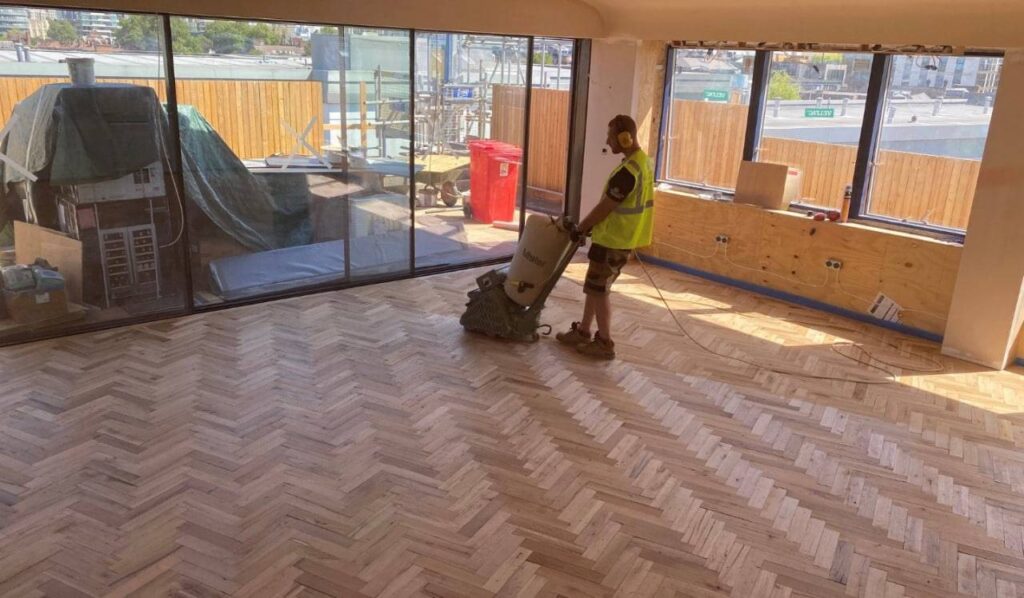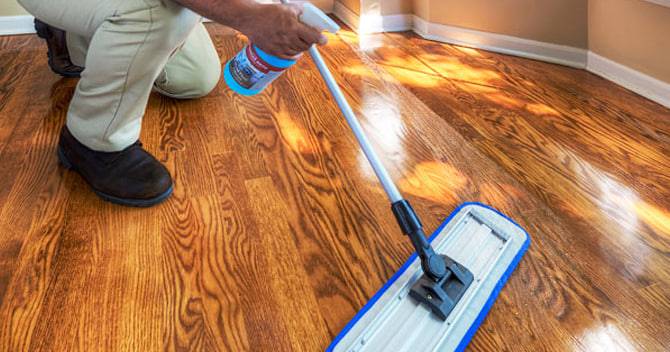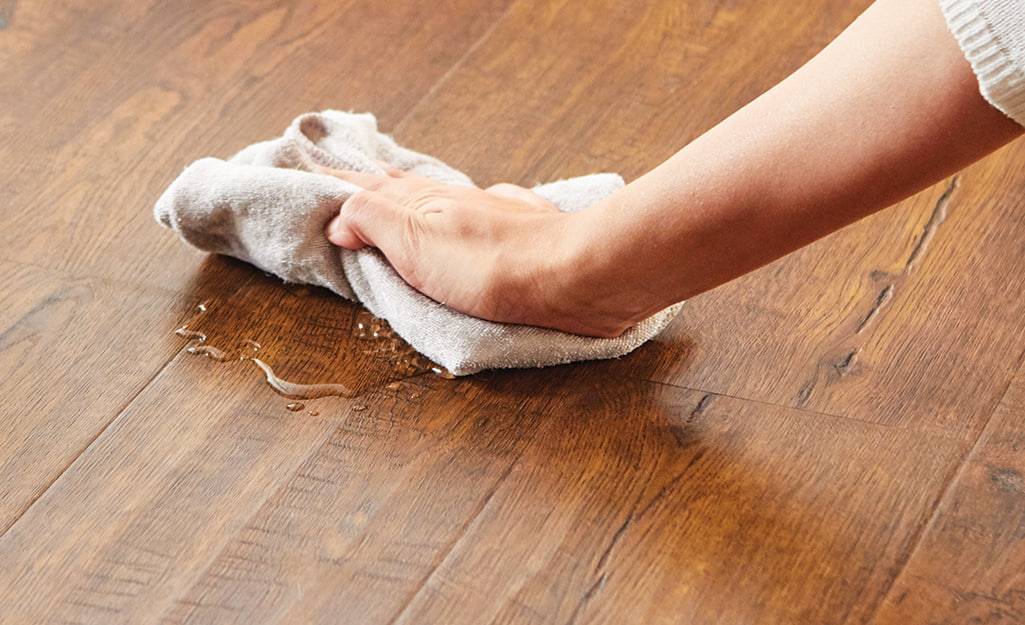The elegant chevron pattern of a herringbone floor adds timeless sophistication to any space. However, maintaining its intricate beauty requires dedicated care, tailored to the specific material. This herringbone flooring maintenance guide empowers you with professional-grade knowledge and techniques to ensure your herringbone floor retains its charm and longevity.
Professional-Grade Cleaning Routines:
- Frequency is Key: Implement a consistent cleaning schedule. Regularly sweep or vacuum (with soft attachments) to remove dust and debris.
- Mop with Precision: Utilize a damp (not soaking) microfiber mop and a manufacturer-approved cleaning solution. Avoid harsh chemicals and excessive moisture, which can damage the floor.
- Material Matters: Always choose cleaning solutions specifically formulated for your floor type.
- Spot Clean Promptly: Act quickly for spills. Blot up liquids immediately with a clean, absorbent cloth, avoiding scrubbing or harsh cleaners.
- Less is More: Over-cleaning can be detrimental. Stick to gentle routines and address specific needs as they arise.
Preventative Measures for Lasting Beauty:
- Strategic Placement: Employ mats and rugs at entrances and high-traffic areas to trap dirt and moisture.
- Furniture Protection: Utilize felt pads under furniture legs to minimize scratches and scuffs.
- Pet Care: Regularly trim pet claws to prevent accidental damage.
- Sunlight Control: Minimize direct sunlight exposure, which can cause fading over time.
- Professional Attention: Consider professional cleaning or refinishing for solid wood floors every few years, depending on usage and wear.
Additional Professional Insights:
- Manufacturer’s Guide: Each material has specific needs. Always refer to the manufacturer’s guide for detailed care instructions and product recommendations.
- Prompt Action: Don’t ignore minor issues like scratches or loose planks. Seek professional help for repairs to prevent further damage and ensure proper restoration.
- Enjoy the Journey: With proper care and maintenance, your herringbone floor will be a cherished feature of your home for generations to come.
Remember, maintaining your herringbone haven requires knowledge, dedication, and professional-grade solutions tailored to your specific floor material. By following these expert-approved tips and recommendations, you can ensure its timeless beauty endures for years to come.
Material-Specific Maintenance:
- Solid Wood: Embrace the warmth and character of solid wood with gentle, pH-neutral cleaning solutions designed for wood floors. Regular oiling or waxing, using manufacturer-recommended products, preserves the natural shine. Address scratches promptly with professional advice or refinishing services.
- Engineered Wood: Similar to solid wood, but with enhanced moisture resistance. Utilize gentle, engineered wood-specific cleaners. Consider periodic touch-up oiling based on the manufacturer’s guidelines.
- Laminate: Budget-friendly and low-maintenance, laminate thrives on readily available laminate floor cleaners. Avoid harsh chemicals, abrasive detergents, and excessive moisture. Employ preventative measures like mats and furniture pads to minimize wear and tear.
- Vinyl: Effortlessly elegant and easy to clean, vinyl requires vinyl-specific cleaners and a focus on preventing scratches and spills. Regular sweeping and mopping with appropriate solutions suffice for most maintenance needs.
The captivating chevron dance of your herringbone floors adds undeniable charm to your space. But just like any prized possession, proper care is essential to maintain its beauty and functionality. Fear not, design enthusiasts! This guide unveils the secrets to caring for your herringbone haven, tailored to different materials:
Solid Wood: Timeless Beauty, Delicate Needs:
- Cleanliness is Key: Regularly sweep or vacuum with a soft-bristled attachment to remove dust and debris. Avoid harsh chemicals and opt for wood-specific cleaners.
- Moisture Matters: Spills are enemies! Quickly wipe them up with a damp (not wet) cloth and avoid excessive humidity.
- Humidity Helpers: Invest in a humidifier to maintain optimal moisture levels and prevent warping.
- Rejuvenating Shine: Periodically refinish the floor with a professional or appropriate DIY product to restore its luster and protect against wear.
Engineered Wood: Balance of Beauty and Durability:
- Cleaning Companions: Similar to solid wood, use soft-bristled vacuums and gentle cleaners. Follow the manufacturer’s recommendations for specific cleaning solutions.
- Moisture Management: While more resistant than solid wood, spills still require prompt attention.
- Maintenance Marvels: Unlike solid wood, engineered floors typically don’t need refinishing, but consult the manufacturer’s guidelines.
Laminate: Affordable Charm, Practical Upkeep:
- Cleaning Champions: Microfiber cloths or mops with laminate-specific cleaners are your weapons against dust and grime. Avoid harsh chemicals and excessive moisture.
- Scratch Stoppers: Place mats at entrances and use felt pads under furniture to minimize scratching.
- Sun Savvy: Protect your floor from direct sunlight with blinds or curtains to prevent fading.
Vinyl: Low-Maintenance Magic, Simple Steps:
- Cleaning Champions: Vinyl loves regular sweeping and mopping with mild detergent and water. Avoid harsh chemicals and abrasive cleaners.
- Spill Stoppers: Promptly address spills to prevent staining.
- Scratch Smart: Similar to laminate, use mats and felt pads to minimize scratches.
Common Challenges, Conquered:
- Scuff Marks: Tackle light scuffs with a magic eraser or wood polish (for solid wood). For deeper marks, consult a professional.
- Stubborn Stains: Address spills based on the material. For example, use baking soda paste for grease on laminate.
- Gaps Between Planks: Natural expansion and contraction occur with some materials. Consult a professional for significant gaps.
Remember: Preventive measures are key. Regular cleaning, prompt spill attention, and appropriate protection minimize wear and tear.
FAQs
Q: What’s the best cleaning solution for my herringbone floor?
A: It depends on the material! This article provides specific recommendations for solid wood, engineered planks, laminate, and vinyl. Remember, harsh chemicals are generally a no-go. Look for gentle cleaners designed for your specific floor type.
Q: How often should I clean my herringbone floor?
A: Regular sweeping and vacuuming are key to prevent dirt buildup. Deep cleaning with a suitable solution depends on foot traffic and material. Solid wood might need monthly attention, while laminate or vinyl might be fine with bi-monthly cleaning.
Q: What are some ways to prevent scratches and wear on my herringbone floor?
A: Place mats and rugs at high-traffic areas, use felt pads under furniture legs, and trim pet claws regularly. Consider protective floor treatments for high-wear areas in solid wood floors.
Q: Can I fix minor scratches or imperfections on my herringbone floor myself?
A: Depending on the material and severity, some DIY methods might exist. However, consulting a professional for repairs is often recommended to ensure proper care and avoid further damage.
Q: How can I maintain the natural shine of my solid wood floor?
A: Regular cleaning with appropriate solutions and periodic waxing or oiling (specific to your wood type) are crucial. Avoid harsh polishes and abrasive cleaning methods.
Q: What should I do if I spill something on my herringbone floor?
A: Act quickly! Blot up spills with a clean, absorbent cloth and avoid scrubbing. Use appropriate cleaning solutions based on the material and spilled substance. For large or stubborn spills, seek professional help.
Q: How long will my herringbone floor last with proper care?
A: Proper maintenance plays a significant role in longevity. Solid wood floors, with proper care, can last for generations, while engineered, laminate, and vinyl floors can offer impressive lifespans depending on quality and care.





